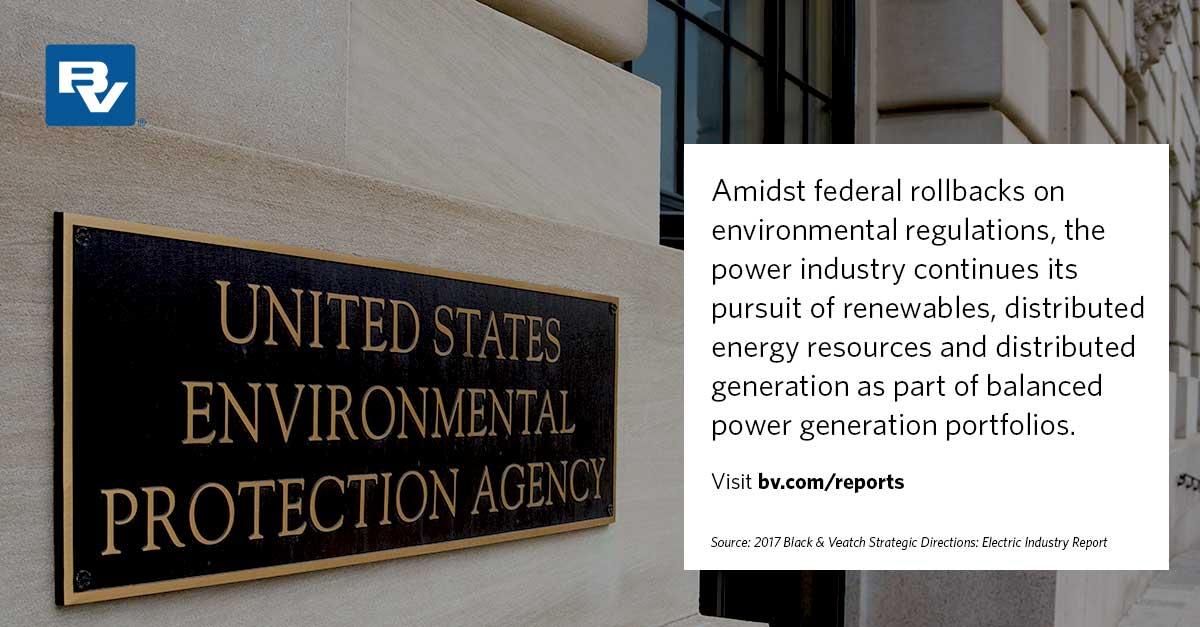All Regulations Are Local: States Surge to Help Set Clean Energy Agenda
Newest Strategic Directions report finds states driving energy policy

Surface reads of recent headlines declaring the federal government’s about-face on energy policy might suggest a shift in recent trends for the power generation sector. A new administration has vowed to roll back numerous environmental regulatory policies aimed at reducing the nation’s carbon footprint and mandating improvements to existing fossil fuel plants. These announcements are leading some to believe that power providers have new impetus to rewrite their long-term planning to account for these changes.
Instead, we find the power industry not only maintaining its pursuit of renewables, distributed energy resources and distributed generation as part of balanced power generation portfolios, but a widespread recognition that while federal roll-backs rules can set a tone, the states will continue to drive the energy policy and regulatory agenda for most utilities.
Learn More - Download the 2017 Electric Industry Report
Since being sworn into office, the new Congress and administration have filled the headlines with announcements of repealing the regulatory actions of the previous Obama administration. Within the first 100 days, President Donald Trump had issued an Energy Independence Executive Order directing reviews for revisions or repeal of the Clean Power Plan and greenhouse gas performance standards for new power plants, along with various other guidance and requirements tied to carbon emissions and costs.
Additional Environmental Protection Agency (EPA) announcements and proposals to suspend and reconsider final rules tightening ozone air quality standards, effluent limit guidelines, methane emissions and risk management programs have been published and taken effect. At the same time, the Department of Justice has been very successful in convincing courts to suspend ongoing litigation over these rules to allow for their reconsideration, which could take several years to complete.
Beyond these pronouncements and suspensions, as of mid-2017, the EPA has yet to take any formal procedural actions to undo these policies. To fully revise or rescind these final rules, the EPA will have to publish new proposed rules, go through a notice and comment period and then issue final rules — all of which will take about a year — likely followed by another year of even more court challenges. It could easily take 2 ½ years or more before the dust settles on these rollbacks.
Meanwhile, because of the nature of generation planning, all these announcements are not likely to change the long view at many companies. Since these plans must look decades into the future, utilities will be reluctant to change course on power generation because in four or eight years a different administration could be in office with an opposite view of energy policy and environmental regulatory policies. This year’s Strategic Directions survey finds organizations largely staying the course they set in recent years under a pro-regulatory political environment.

